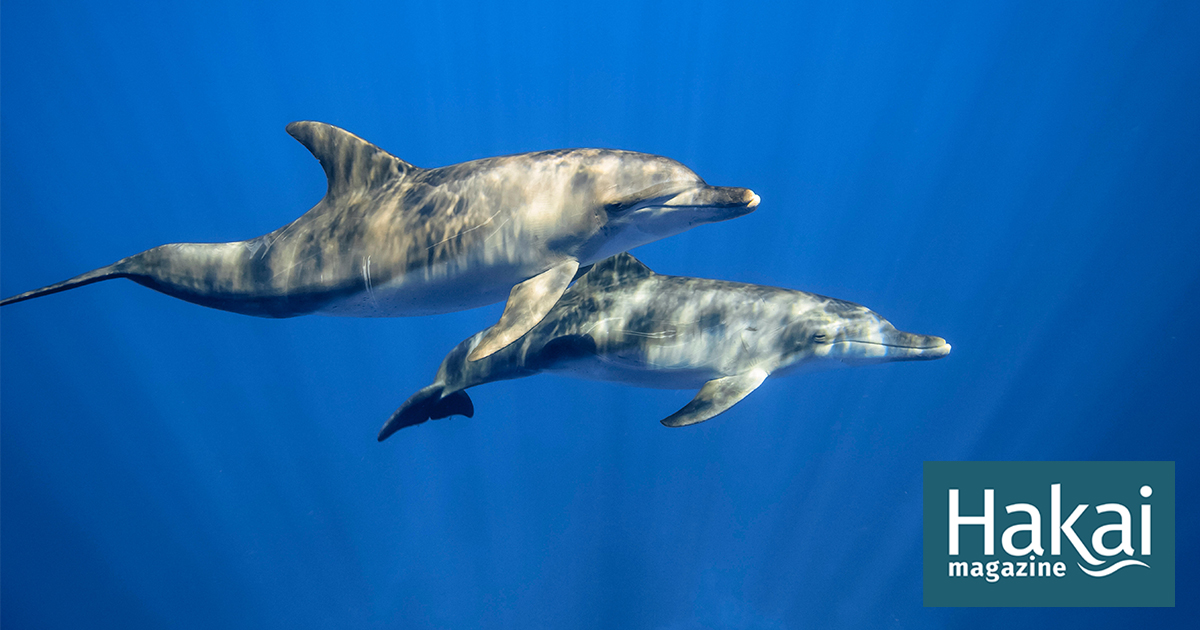
Article body copy
Scat. Guano. Dung. Poop. Everybody makes it, and scientists love it—because once you get past the smell, feces can be a treasure trove of information.
Scientists already use scat to track the health of endangered species, such as killer whales. Otter excrement, meanwhile, helps scientists understand how vital nutrients move through marine and terrestrial food webs. And in a new study, scientists outline another excellent use for poo: to noninvasively determine the ages of Indo-Pacific bottlenose dolphins.
Researchers have several ways to calculate the ages of marine mammals, but the techniques can be quite intrusive. One is to capture a marine mammal and extract its tooth, then measure the layers of dentin growth—sort of like counting rings on a tree. Another strategy, known as an epigenetic clock, is to look at how the animal’s DNA has changed over the course of its life through a process called methylation. That typically requires a skin sample, which scientists collect with a rifle or crossbow.
Tooth extraction, while largely safe, brings the risk of infection and other health issues. It’s also stressful for the animal, as is sampling skin tissue. Stressing animals could alter their health or behavior, as well as cloud scientists’ understanding of the animal’s natural ecology, says Genfu Yagi, the lead author of the new study, who’s pursuing a PhD at Mie University in Japan.
“Hence, there is a need for noninvasive age-estimation methods,” says Yagi by email.
The solution? Collect crap instead.
Studies published in 2019 and 2020 revealed that the epigenetic clock technique used to calculate animal ages from skin samples works with fecal samples, too. But those researchers sampled chimpanzee and Japanese macaque feces. Would it work on marine mammals, Yagi wondered?
And so he and his colleagues went diving for dolphin feces around the Japanese island Mikura-jima between 2014 and 2021. Their target? A population of Indo-Pacific bottlenose dolphins that has been studied continuously since 1994—and whose ages are already well documented.
Believe it or not, Yagi says swimming through dolphin doo-doo isn’t as gross as it sounds.
“Dolphin feces has a smoke screen–like appearance, with several small clumps,” says Yagi. “The smell is not unpleasant, resembling a fishy odor rather than the typical odor associated with human or pet feces.”
Back at the lab, the scientists confirmed that measuring the fecal samples through DNA methylation rates is an accurate method for estimating the dolphins’ ages. Their work shows the poop-based process is just as reliable as invasive methods—a first for marine mammals.
Steve Horvath, a geneticist at the University of California, Los Angeles, invented the epigenetic clock technique and first tested its effectiveness for calculating people’s ages in 2011. “I think the paper is highly innovative,” he says.
While the method still needs fine-tuning and development—Yagi’s tests didn’t work well on female dolphins that were nursing, for instance—Horvath believes epigenetic dating with feces could be used on a range of animals. “It could be very valuable for endangered species,” he says.
Poo, what can’t it do?
Article footer and bottom matter
Cite this Article:
Cite this Article: Jason Bittel “How Old Am I? Ask My Poop,” Hakai Magazine, May 17, 2024, accessed May 17th, 2024, https://hakaimagazine.com/news/how-old-am-i-ask-my-poop/.
https://news.google.com/rss/articles/CBMiOGh0dHBzOi8vaGFrYWltYWdhemluZS5jb20vbmV3cy9ob3ctb2xkLWFtLWktYXNrLW15LXBvb3Av0gEA?oc=5
2024-05-17 07:04:35Z
CBMiOGh0dHBzOi8vaGFrYWltYWdhemluZS5jb20vbmV3cy9ob3ctb2xkLWFtLWktYXNrLW15LXBvb3Av0gEA
Tidak ada komentar:
Posting Komentar